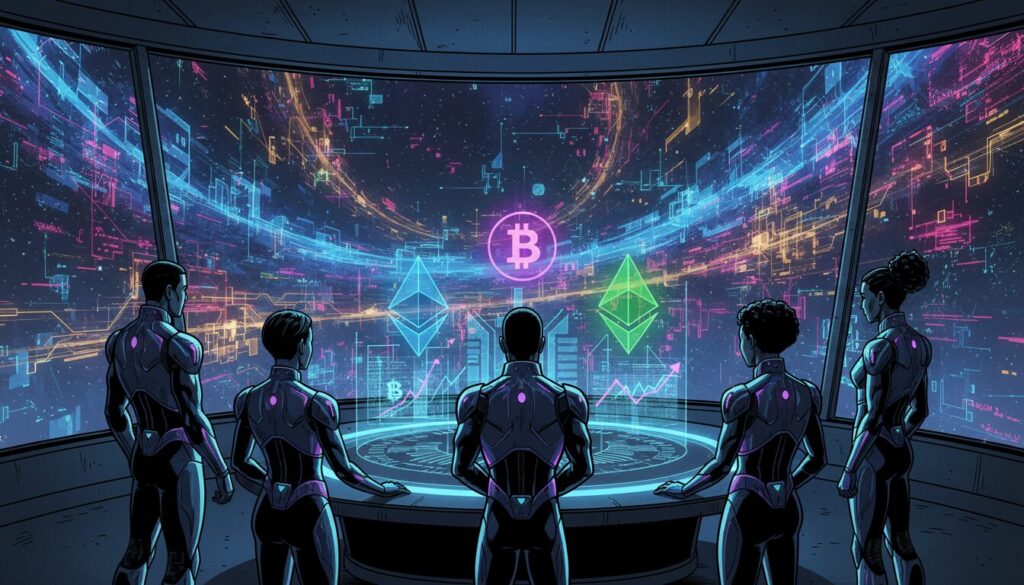A Tale of Two Cryptos: User Activity Wanes as DeFi Capital Surges

The cryptocurrency market is moving in two different directions at once. While on-chain user activity is slowing, financial flows are intensifying behind the scenes. Amid this shifting landscape, many decentralized applications (dApps) are losing their audience, even as the Decentralized Finance (DeFi) sector consolidates its foundations. It’s a market defined by fewer clicks but more capital, creating a two-speed dynamic that is reshaping the ecosystem.
The Silent Decline in dApp Engagement
For consumer-facing dApps, the recent trend has been a quiet erosion of users. According to a DappRadar report for the third quarter of 2025, the industry saw a 22.4% drop in daily unique active wallets, averaging 18.7 million per day. Key sectors like SocialFi and AI have seen their user bases shrink, and even established experiences are struggling to maintain momentum.
For example, Virtuals Protocol, which gained traction with the rise of AI agents, now only attracts between 1,000 and 1,500 daily wallets, a sharp drop from its average of 10,000 in the previous quarter. Social dApps such as Layer3 and The Arena are also finding it difficult to hold user attention. Even the dominant gaming segment, which accounts for 25% of the market, appears to be stagnating, with engagement often feeling more artificial than genuine, driven by daily logins and rewards rather than compelling gameplay.
This slowdown raises important questions. The crypto sector isn’t short on new projects or announcements, but the perceived value for the average user seems to be diminishing. Technological innovation alone is no longer enough if it isn’t paired with clear, simple, and attractive use cases.
DeFi’s Ascent: A Magnet for Serious Capital
While mainstream dApps face headwinds, DeFi is attracting significant capital. The Total Value Locked (TVL) in the sector has surged past a historic peak, fueled by several key dynamics. Stablecoins have become a critical bridge from traditional finance, with inflows approaching $46 billion, led by Tether (USDT) and USD Coin (USDC).
Regulatory developments are also playing a crucial role. In the United States, the GENIUS Act has provided a legal framework for stablecoins, reassuring institutional investors. This confidence is reflected in the success of new infrastructure like Plasma, a blockchain dedicated to stablecoins that captured over $8 billion in TVL shortly after its launch. Combined with institutional investments through Bitcoin ETFs and crypto allocation funds, the foundation of the DeFi ecosystem is growing stronger.
The trend shows that boundaries are blurring between digital finance, real-world assets (RWAs), and structured financial products. DeFi’s success is rooted in its robust infrastructure, where lending protocols and cross-chain liquidity appeal more to fund managers than to casual gamers.
From Collectibles to Capital: The New Face of NFTs
Beyond the numbers, a deeper specialization is occurring across the crypto industry. Non-Fungible Tokens (NFTs), once viewed primarily as digital collectibles, are increasingly becoming sophisticated financial instruments. This evolution is a clear sign of the market’s maturation.
Platforms like Courtyard, which tokenizes physical collectibles like Pokémon and baseball cards, exemplify this shift. Each NFT corresponds to a tangible object that is stored, tradable, and physically deliverable. In the third quarter alone, the platform sold 1.55 million units, generating $145 million in volume. Another innovation, PunkStrategy, is a decentralized protocol that automates trading CryptoPunks, using token burns to manage supply and distribute profits—a mechanic taken directly from the DeFi playbook.
The crypto playground is evolving. It’s no longer just about building digital communities; it’s about organizing and structuring capital in a quieter but infinitely more powerful way. The sector’s growth now rests on three pillars: decentralized lending, the tokenization of real assets, and the expanding influence of stablecoins. These forces are reshaping finance into something more open, efficient, and connected to the tangible economy.











